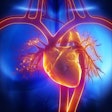The standard inhaled gas mixture (30% xenon plus oxygen) is well-tolerated by most patients; however, as many as 70% experience transient side effects "such as resistance in respiration or an uncomfortable feeling, sometimes leading to the interruption of the procedure," Dr. Martine Rémy-Jardin, from Hôpital Albert Calmette, told AuntMinnie.com.
In the study, to be presented by co-investigator Dr. Anne-Lise Hachulla, 32 patients with severe emphysematous lesions underwent dual-source, dual-energy chest CT with reconstruction of both diagnostic and ventilation images. Instead of the standard xenon mixture, however, patients inhaled a mixture of stable, nonradioactive krypton (80%) plus oxygen. Investigators measured attenuation in regions of severe emphysema, as well as in a region without structural abnormalities.
The attenuation differences between the two regions were all significant, demonstrating the feasibility of imaging with krypton and without patient side effects.
"Krypton ventilation CT with a dual-energy technique provides simultaneous thin-section CT and a ventilation map, both being able to be completed by quantitative analyses," Rémy-Jardin said. "Combined analysis of structural changes and regional ventilation from a single examination has the potential to help understand functional alterations in patients with COPD."
Patients had no side effects from krypton, and the radiation dose was in the range of a single-source CT exam, providing a combined morphological and functional evaluation of the lungs.



















